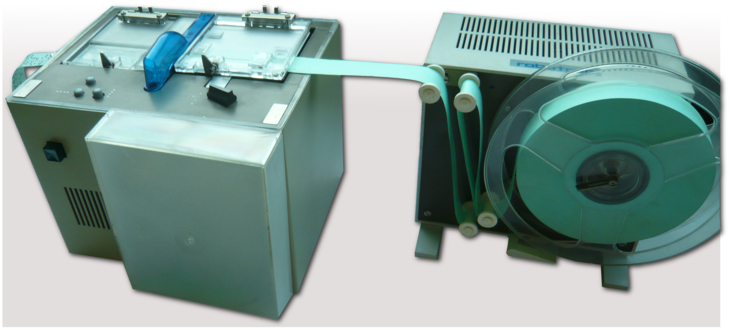The early punched tapes came with five rows of holes, which provided 32 possible signs per column. Additionally to those five holes the tapes often had another row of smaller sprocket holes between row three and four for feeding the tape. Typically it had a width of
17.4mm. To increase the number of signs people used the Baudot–Coding, which used two control characters to switch between two different codings. Since computer
scientists prefer eight bit–codes, later formats consisted of eight rows, thus there were 256 possiblesigns. Those tapes had a width of 25.4mm (one inch) and
again the sprocket holes are situated between the third and fourth row.
Both of these formats have 10 signs fitted on one inch (25.4mm) of tape, enabling aneight–bit tape reader to read 5–bit tapes,
if it uses the sprocket holes. This does not work the other way around. Some machines can even stance both formats. In case of the eight bit variant that would mean ten
byte per inch. Hence one kB of data would need 100 inch of tape (that equals 2,540 mm or 2.5 meters). One GigaByte would thus fill 2,540 km of tape.
Furthermore there were versions with six, seven or ten rows. The seven row version was well suited to hold ASCII code.
